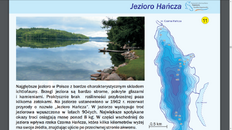Your earlier statement compared solo diving to CCR and cave diving. This statement contains nothing about solo or cave.
I think your posts and the attitude displayed are, *ahem*, not helpful in any way.
Just for clarification, I think he indicated the visibility was 3 m rather than 1 m?
I apologize if you feel I was misrepresenting your prior opinion about the buddy's actions that day. I know how easy it is to lose a buddy, so that is one reason why I was (erroneously) thinking that the appropriate response would be to maintain physical contact and and to ascend directly.
If I were on a similar OC dive, I am pretty sure I would have started an ascent, but I now understand that things are entirely different with a RB and dry suit etc. and that my limited perspective is not relevant to this situation.
You did and continue to represent the loss of the buddy as a decision on the part of the diver. That is just ridiculous. The diver did not make a decision to lose his buddy. Letting go of him physically, in order to accomplish some other required task is not a decision to lose his buddy. If a juggler drops one of his 7 balls, does that mean he made a decision to drop the ball? No. It means that circumstances exceeded his ability to keep control of that ball.
Diving a CCR is more complicated than diving OC. And, ascents are the MOST complicated part of diving a CCR. Gases are expanding all over the place. ppO2 levels are dropping. Injectors are firing to make up for the dropping ppO2 (possibly, if diving an eCCR), which means the machine is adding gas to the loop, which you are already dealing with having it expanding and making you positive.
It's a lot. I have about 80 hours on the loop. That is nothing by the standards of the truly experienced people on here. But, I'm well past being a total newbie and it is still a lot, for me. Taking all that and adding the job of doing it or making sure it's done for your (compromised) buddy, in addition to doing all that for oneself is a LOT.
Doing what one HAS to do to keep oneself from corking, and losing your buddy in the process, does not (necessarily) represent a bad decision on the part of the diver. Unless you simply fall back to saying "buddy diving on a CCR in low viz is a bad decision, period." In which case, well, that's a subjective statement with no real refutation, I don't think, other than, "my opinion differs."
I really appreciate the original post, the translation, and the experienced people who have shared their insights here. Thank you to all of you.





